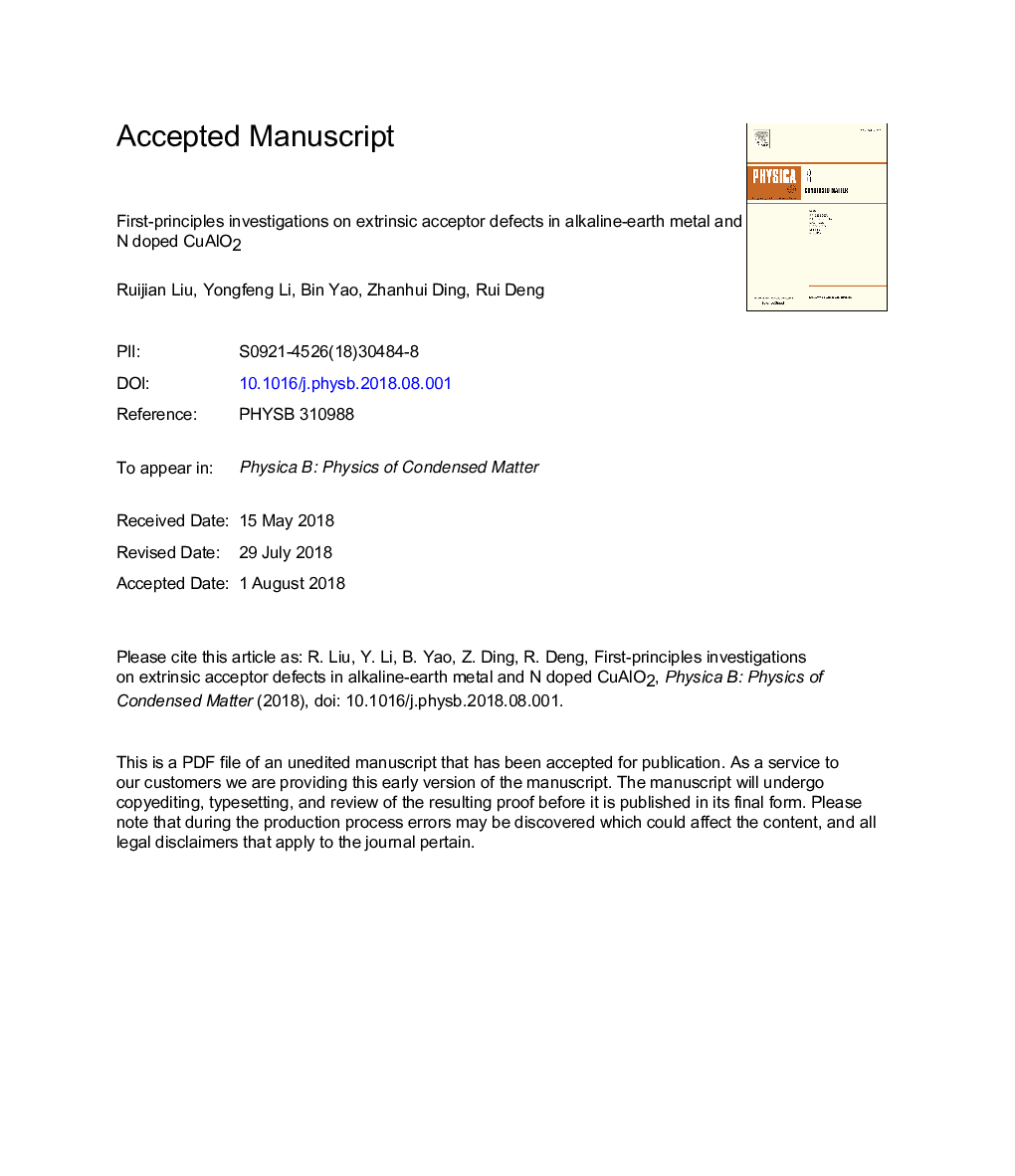| Article ID | Journal | Published Year | Pages | File Type |
|---|---|---|---|---|
| 8160100 | Physica B: Condensed Matter | 2018 | 43 Pages |
Abstract
First-principles calculations based on density functional theory were performed to investigate the behavior of alkaline-earth metal (Be, Mg, Ca) and/or N in CuAlO2. It was found that MgAl acceptor is easier to be formed than either of BeAl and CaAl due to its lowest formation energy in CuAlO2. An O-rich condition in the growth process of CuAlO2 may facilitate the formation of extrinsic acceptor defects. The nitrogen prefers to substitute O site rather than to occupy the interstitial site in CuAlO2 but the p-type conductivity of CuAlO2 can hardly be enhanced by N doping due to the high formation energy of NO defect. In addition, the alkaline-earth metal and N co-doping in CuAlO2 is not feasible to form dual-acceptor complex since the incorporation of MAl (Mâ¯=â¯Be, Mg, Ca) with NO is unstable. The substitution of alkaline-earth metal for Al sites in CuAlO2 may cause the photon absorption in the visible light and thus degrades the transmittance of CuAlO2, which agrees well with some experimental results. Based on spin polarized electronic structure and total energy calculations, it is predicted that room temperature ferromagnetism can be observed in alkaline-earth doped CuAlO2 and therefore it is a promising p-type dilute magnetic oxide.
Related Topics
Physical Sciences and Engineering
Physics and Astronomy
Condensed Matter Physics
Authors
Ruijian Liu, Yongfeng Li, Bin Yao, Zhanhui Ding, Rui Deng,
